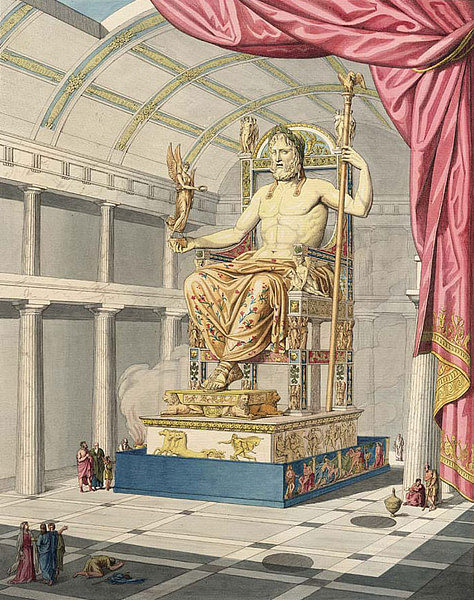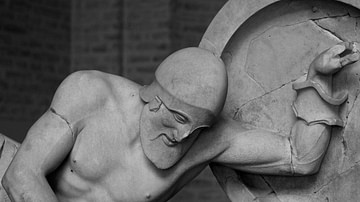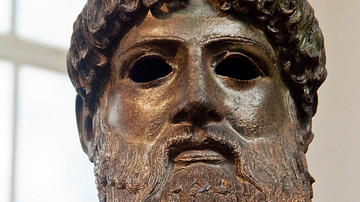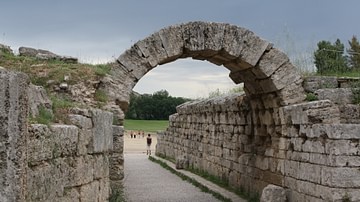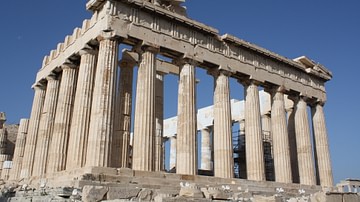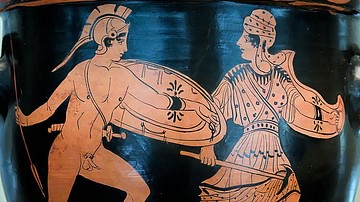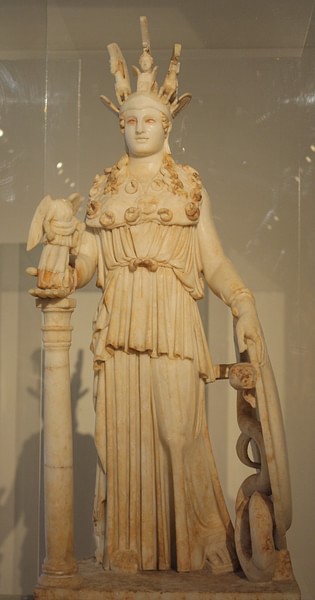
Phidias (also Pheidias) was, according to his contemporaries, the most renowned of all Greek sculptors. His greatest masterpieces were completed between c. 465 and 425 BCE. Unfortunately, except through copies, no example of his work has survived. Although little is known of his early life, he rose to prominence during the rule of the statesman, commander, and orator Pericles around 449 BCE in the Golden Age of Athens. Phidias is most famous for his three Athenian monuments to Athena, the virgin Greek goddess of wisdom and war, as well as the statue of Zeus at the Temple of Zeus in Olympia, one of the Seven Wonders of the Ancient World. Supposedly, his works were so inspiring that people believed he had witnessed the majesty of the gods and revealed it to mankind through his sculptures.
Athena in Athens
Of his youth, the only facts known about Phidias are that he was the son of Charmides (not the statesman of the same name) and a student of the Athenian sculptors Hegias and Hageladas. When Pericles came to power around 461 BCE, he initiated an extensive building program and placed Phidias, a member of his inner circle, in charge of all artistic projects. The sculptor's most celebrated works included three monuments on the Acropolis to the goddess Athena: the 9 metre (30 ft) high bronze Athena Promachos, completed in 456 BCE and one of his earlier works; the bronze Lemnian Athena dedicated to the colonists of Lemnos; and lastly, for the Parthenon, the Athena Parthenos.
According to modern research, the Athena Parthenos, begun in 447 BCE and dedicated in 438 BCE, was forty feet tall and draped in ivory with over a ton of gold. She was dressed in a tunic, carried an aegis (a type of shield) adorned with the head of Medusa, and helmet. In her right hand she held an image of Nike, the goddess of victory, and in her left she clutched a spear. The Parthenos stood behind a shallow pond filled with oil not only to provide a reflection of the statue but also to aid in keeping the statue's ivory from cracking in the dry Athenian heat.
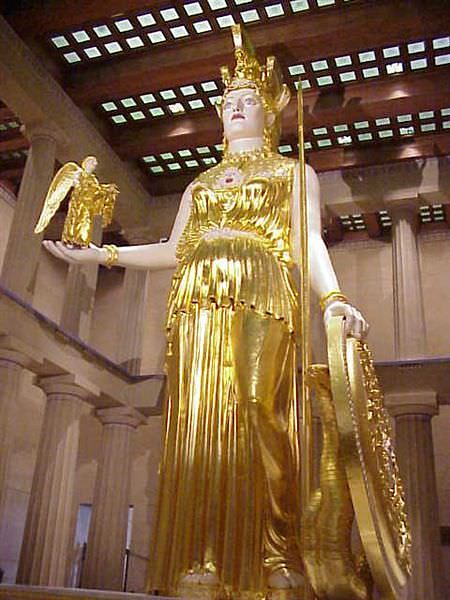
As a friend of Pericles, Phidias was made responsible as general manager and supervisor for the rebuilding of the Parthenon, although the late 1st century CE Greek historian Plutarch gives the majority of the credit to architects Callicrates and Ictinus. The Acropolis and old Parthenon had been destroyed during the Persian Wars. The new structure was meant to represent the courage of the Greeks in their subsequent triumph over the Persian invaders. Plutarch in his Greek Lives spoke of Phidias, his relationship with Pericles, and his Athena sculpture in a chapter on the Greek statesman. He wrote,
Phidias made the golden statue of the goddess, and his name can be found inscribed as its maker on the stele. He was in charge of almost everything and, as I have mentioned, was the general manager of all the craftsmen - a post he gained as a result of his friendship with Pericles. As well as making people jealous of Phidias, this proved to be another pretext for maligning Pericles … (157).
Zeus at Olympia
While his monuments to Athena brought him fame, his greatest masterpiece was the statue at the temple of Zeus in Olympia. Taking eight years to complete, it was finished in 430 BCE. The Temple of Zeus was considered one of the Seven Wonders of the Ancient World. Seated on a throne, Zeus, like Athena, held the image of Nike in his right hand and a scepter in his left. The statue stood over 12.8 m (42 ft) high - larger even than the Athena Parthenos - and was composed of ivory and gold. Again, like so many of his other works, the temple and statue no longer exist, destroyed by fire and earthquakes. It fell into ruins and was eventually covered by a landslide and river silt.
Disgrace & Death
Phidias's final years are a mystery. Pericles's enemies accused the sculptor of stealing not only gold but also ivory during the making of Athena Parthenos. According to some authors, while he was supposedly able to prove his innocence on that charge, he was also accused of impiety for his portraits of Pericles and himself on Athena's shield. Plutarch supported the idea that Phidias may have been guilty, although he states the “theft was not proven,”. The enemies of Pericles, though, remained adamant about the impiety, so Phidias was jailed and died in prison. Apparently, the sculptor's friendship with Pericles caused him to acquire “one group of enemies on his own account, simply because they were jealous of him…” (172). Plutarch added, “So Phidias was taken off to prison where he died of an illness, although according to some writers Pericles' enemies arranged for him to die of poisoning, in order to discredit Pericles.” (172).
The sculptor's presence in Olympia is attested by the discovery of his workshop and the completion of the colossal Zeus gives proof to the fact that he did not die in prison - he may have been exiled or, fearing for his life, fled to Olympia. While he may not have died in prison, many believe he may have been killed by the Eleans. Regarded as the greatest of the Athenian sculptors, it is unfortunate that his memory and craft are only remembered through copies and the testament of contemporary authors. However, he influenced countless artists not only in Greece but also in Rome.
